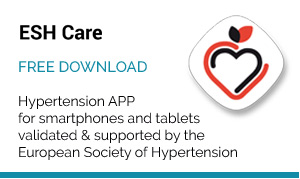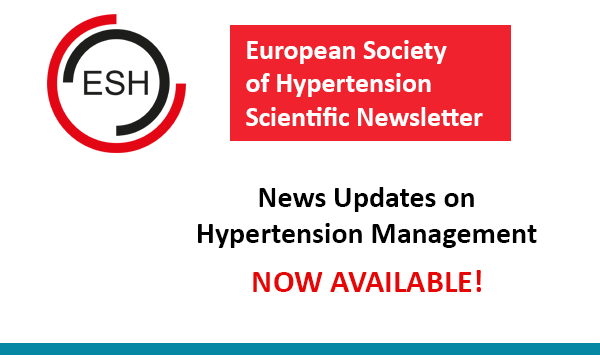Hypertension 2008
Cardiovascular disease (CVD), once considered a disease of affluence, now reaches into all corners of the globe. It is increasingly among the leading causes of death among middle-income and developing countries: for example, death due to CVD affects 52% of individuals younger than 70 in India compared to 23% in countries with established market economies. (1,2) In fact, in projections made in 2005, the percentage of individuals dying worldwide from cardiovascular disease was expected to rival deaths from communicable, maternal, and perinatal conditions, combined with nutritional deficiencies, which remain endemic in less developed nations. (3)
Thus prevention of CVD should be a medical and scientific priority worldwide. Modification of cardiovascular risk factors is a critical piece of the puzzle. In an analysis of the global burden of disease attributable to hypertension, for example, high blood pressure (BP) was the culprit in 7.6 million premature deaths and 92 million disability-adjusted life years worldwide – and only about half of these cases had frank hypertension; the others had more borderline levels of high BP. (4) Overall, 80% of this global burden occurred in low- and middle-income countries.
In Dire Need of Solutions
According to Dr. Richard Horton (UK), Editor-in-Chief of The Lancet, moving from a global burden to a global solution will take the dissolution of several myths. Besides the notion that CVD impacts only the wealthy, he said, some want to believe that “chronic diseases develop over a lifetime of risk experience and that effective prevention will take generations, which is far beyond political attention spans.” Others choose to believe that preventive methods are not cost-effective.
Yet various organizations, such as the World Health Organization, the Institute of Medicine, the World Heart Federation, and others, have published studies and recommendations all targeting control and prevention of cardiovascular and other chronic diseases, reinforced by evidence that refutes those myths. But the call to action must extend beyond institutions whose goals involve disease prevention to larger-scale societal and political groups who have more far-reaching ability to enact change – or impede it – in terms of how medicine is practiced and the way policies are made.
In the area of hypertension, for instance, instead of treating total blood pressure, a June 18, 2008 article published online in The Lancet argues that evidence supports a more simplified view of hypertension treatment of most patients, specifically those age 50 years and older: for these patients, only systolic BP should be targeted for treatment. (5)
The article was written by Prof. Bryan Williams, FRCP, Lars H. Lindholm, MD, and
Peter Sever, FRCP. Their rationale: diastolic pressures fall progressively from age 50; therefore, as the demographics of populations shift towards older age, the population burden of CVD attributable to BP will be almost entirely related to systolic pressure. Unfortunately, they said, many clinicians still use diastolic pressures to guide their clinical management decisions.
In a press conference at Hypertension 2008, Dr. Horton agreed, adding: “This is completely not what doctors go out there and do currently. Doctors are confused about the messages between systolic and diastolic blood pressure, and if doctors are confused, you can be sure the public and patients are confused, too. So doctors need to pull themselves together to focus on what really matters and what the evidence is telling us about systolic blood pressure.”
He also asks doctors and scientists to have “much stronger voices than they currently have in the way policies are being shaped.” Lessons can be learned, he said, from how professionals and others involved in the HIV/AIDS community were able to mobilize society globally to acknowledge the widespread burden of the disease and search for solutions as AIDS spread around the world.
Dr. Horton included international organizations in those who need to advocate for global public health “because there is a time bomb of hypertension out there that is rapidly and aggressively scarring communities around the world.” He urges larger regional groups, such as the European Union, to become leaders in terms of advocating for public health in an effective and meaningful way. “The only way to rebalance the global agenda is for regional groupings such as the EU to have a stronger voice,” he said. “So I would say to the EU, get real about what matters.”
References:
- Reddy KS, Yusuf S. Emerging epidemic of cardiovascular disease in developing countries. Circulation 1998;97:596-601.
- Singh RB, Suh IL, Singh VP, et al. Hypertension and stroke in Asia: prevalence, control and strategies in developing countries for prevention. J Hum Hypertens2000;14:749-63.
- Strong K, Mathers C, Leeder S, Beaglehole R. Preventing chronic diseases: how many lives can we save? The Lancet 2005;366:1578-82.
- Lawes CMM, Vander Horn S, Rodgers A; for the International Society of Hypertension. Global burden of blood-pressure-related disease, 2001. Lancet 2008;371:1513-8.
- Williamns B, Lindholm LH, Sever P. Systolic pressure is all that matters. The Lancet. Epub June 18, 2008.






